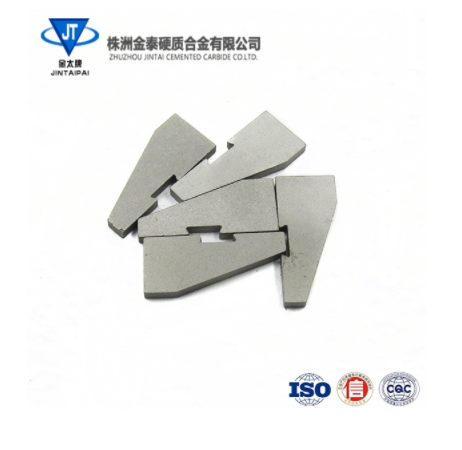Several issues cannot be ignored when grinding carbide blades: as follows:
1. Grinding wheel abrasive grains
Grinding wheel abrasive grains of different materials are suitable for grinding tools of different materials. Different parts of the tool require different sizes of abrasive grains to ensure the best combination of edge protection and processing efficiency.
Aluminum oxide: used to sharpen hss blades. The grinding wheel is cheap and easy to modify into different shapes for grinding complex tools (corundum type). Silicon carbide: used to modify CBN grinding wheels and diamond grinding wheels. PCD.CBN blade (cubic boron carbide): used to sharpen hss tools. Pricey, but durable. Internationally, grinding wheels are represented by b, such as b107, where 107 represents the size of the abrasive grain diameter. Diamond: used for grinding HM tools, expensive, but durable. The grinding wheel is represented by d, such as d64, where 64 represents the diameter of the abrasive grain.
2. Appearance
In order to facilitate grinding different parts of the tool, the grinding wheels should have different shapes. The most commonly used ones are: parallel grinding wheel (1a1): grinding top angle, outer diameter, back, etc. Disc-shaped grinding wheel (12v9, 11v9): grinding spiral grooves, main and secondary edges, trimming chisel edges, etc. After a period of use, the shape of the grinding wheel needs to be modified (including plane, angle and fillet r). The grinding wheel must often use a cleaning stone to clean away the chips filled between the abrasive grains to improve the grinding ability of the grinding wheel.
3. Grinding specifications
Whether it has a good set of carbide blade grinding standards is a criterion to measure whether a grinding center is professional. Grinding specifications generally stipulate the technical parameters of the cutting edges of different tools when cutting different materials, including edge inclination angle, vertex angle, rake angle, relief angle, chamfer, chamfer and other parameters (in carbide inserts The process of dulling the blade is called “chamfering”. The width of the chamfer is related to the material being cut, and is generally between 0.03-0.25mm. The process of chamfering the edge (the tip point) is called “chamfering”. . Each professional company has its own grinding standards that have been summarized over many years.
Relief angle: A matter of size, the relief angle of the blade is very important to the knife. If the clearance angle is too large, the edge will be weak and easy to jump and “stick”; if the clearance angle is too small, the friction will be too great and the cutting will be unfavorable.
The clearance angle of carbide blades varies depending on the material, blade type, and blade diameter. Generally speaking, the relief angle decreases as the tool diameter increases. In addition, if the material to be cut is hard, the relief angle will be smaller, otherwise, the relief angle will be larger.
4. Blade testing equipment
Blade inspection equipment is generally divided into three categories: tool setters, projectors and tool measuring instruments. The tool setter is mainly used for tool setting preparation (such as length, etc.) of CNC equipment such as machining centers, and is also used to detect parameters such as angle, radius, step length, etc.; the function of the projector is also used to detect parameters such as angle, radius, step length, etc. . However, the above two generally cannot measure the rear angle of the tool. The tool measuring instrument can measure most of the geometric parameters of carbide inserts, including the relief angle.
Therefore, professional carbide blade grinding centers must be equipped with tool measuring instruments. However, there are not many suppliers of this kind of equipment, and there are German and French products on the market.
5. Grinding technician
The best equipment also requires personnel to operate it, and the training of grinding technicians is naturally one of the most critical links. Due to the relative backwardness of my country’s tool manufacturing industry and the serious lack of vocational and technical training, the training of tool grinding technicians can only be handled by the companies themselves.
With the hardware such as grinding equipment and testing equipment, grinding standards, grinding technicians and other software, the precise grinding work of carbide blades can begin. Due to the complexity of tool use, professional grinding centers must promptly modify the grinding plan according to the failure mode of the blade being ground, and track the use effect of the blade. A professional tool grinding center must also constantly summarize experience before it can grind the tools.
Post time: Oct-14-2024













